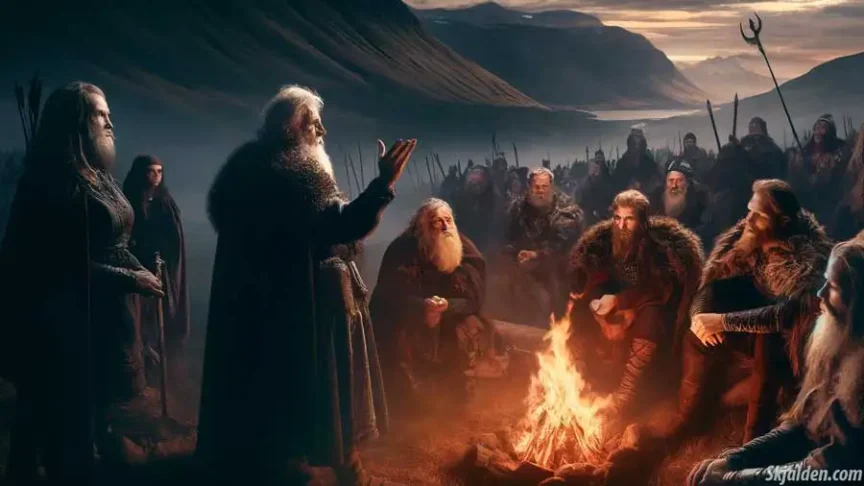A saga is a story that comes from old traditions in the Nordic regions. These stories were first told by mouth and passed down through generations before they were written. They mostly tell tales about brave heroes and their lives, battles, and families. The most detailed and well-kept sagas come from Iceland. These were written from about 1170 to 1400.
These sagas were written down by mostly unknown authors, with few exceptions like Snorri Sturluson and his nephew Sturla Thordarson. They recorded these tales on parchment (untanned skins of animals—primarily sheep, calves, and goats). For many years, these writings were kept in Denmark. In 1971, they were moved back to Iceland after much public discussion. Now, they can be seen in a display in Reykjavik.
How Sagas Connect Us to the Past
Sagas are lengthy tales that often resemble modern novels. They focus on real historical figures and events but are told in a way that makes you feel as if you are there. These stories cover a variety of themes, including honor, bravery, and family bonds. They don’t just recount events; they also give us a peek into the societal norms of their times.
In sagas, you won’t find direct descriptions of characters. Instead, their actions show us who they are. For example, a saga might show a hero’s courage by describing a bold decision or a daring fight. This way of showing rather than telling makes these characters memorable and brings the stories to life.
Different Types of Sagas
Sagas come in various forms. King’s sagas tell about rulers and their reigns. Bishop’s sagas focus on the lives of church leaders. Then there are legendary sagas, filled with myths and humor. Family sagas deal with, you guessed it, families and their dramas, often over many years. These stories show all sorts of human emotions and conflicts.
Nowadays, when people talk about sagas, they often mean long family stories that might remind you of old sagas but are set in more recent times. This shows how these ancient tales still influence stories today. They help us understand more about human nature and our history.
Bringing Ancient Stories to Modern Readers
In 2014, a significant translation project breathed new life into the ancient sagas, translating the complete collection into Danish. This endeavor was part of a larger effort to make these historical narratives accessible to a contemporary audience. The project aimed to preserve and rejuvenate the rich storytelling traditions encapsulated in these texts.
Translating these sagas serves several purposes. First, it ensures that the wisdom, entertainment, and cultural values embedded in these stories are not lost to time. Second, by presenting them in modern languages, the project helps bridge the gap between past and present, making it easier for today’s readers to connect with the tales.
The translation of these sagas allows new generations to experience and appreciate the depth and complexity of these narratives. It keeps the saga spirit alive, ensuring that the tales of bravery, strategy, and human emotions continue to inspire and teach. For many, this project has opened a window into a world that feels both ancient and surprisingly relevant.
Key Texts Translated
The project included a range of important Icelandic sagas such as:
Njál’s Saga: Chronicles the life and legal expertise of Njál and the deep friendship and eventual feud with his friend Gunnar.
Egil’s Saga: Details the adventures and poetry of Egil Skallagrimsson, capturing his complex character and exploits across Scandinavia.
Laxdæla Saga: Focuses on a powerful love triangle that influences generations, weaving themes of passion, betrayal, and familial duty.
Grettir’s Saga: Follows the exploits and misfortunes of Grettir Ásmundarson, portraying his battles against both human and supernatural foes.
The Saga of the People of Laxardal: This is a saga centered on intricate family dynamics and strong female characters, highlighting the social fabric of the time.
These sagas, and others in the collection, offer a vivid insight into the minds and societies of ancient Norse cultures, brought to life through this modern translation effort.
